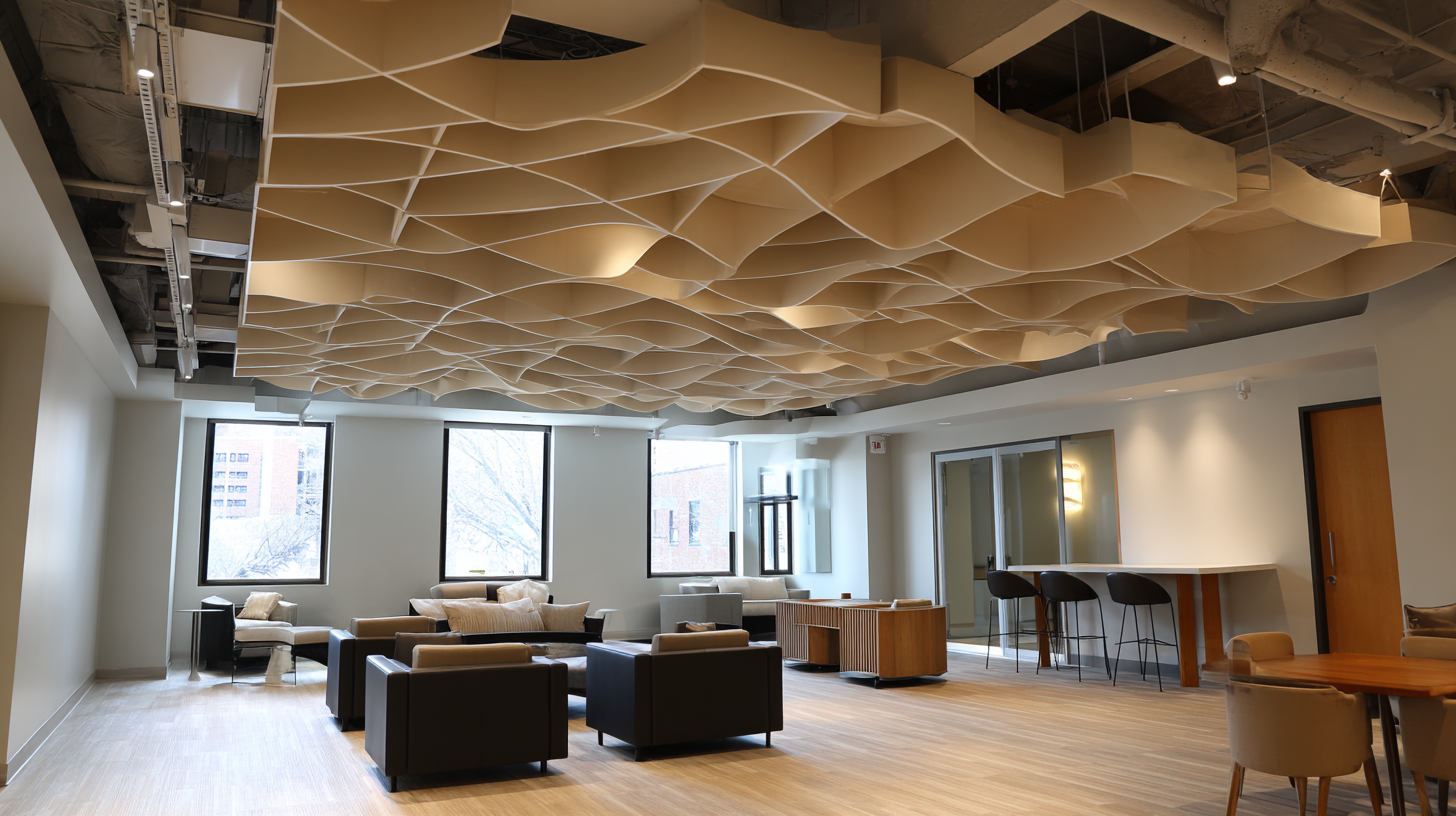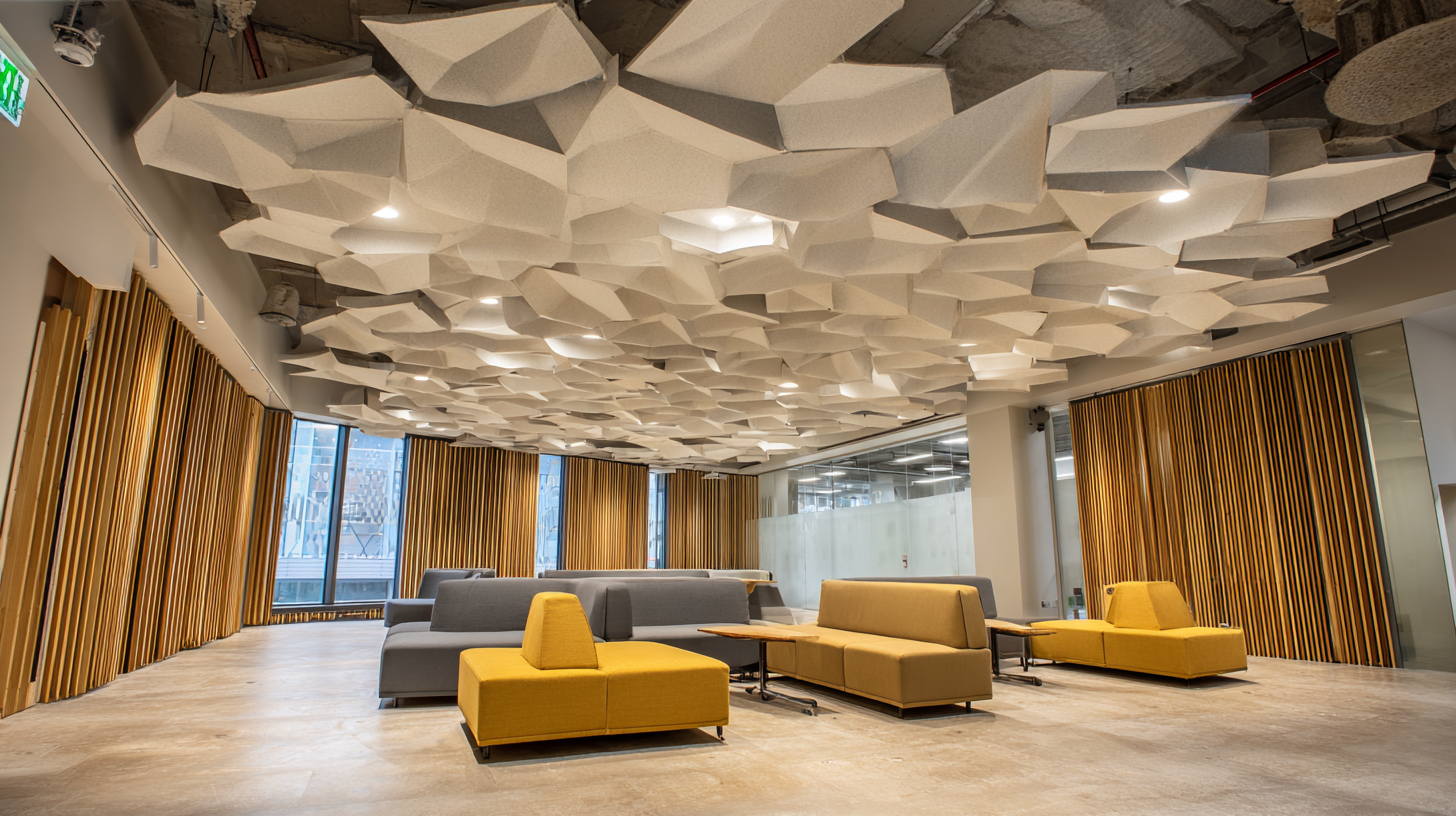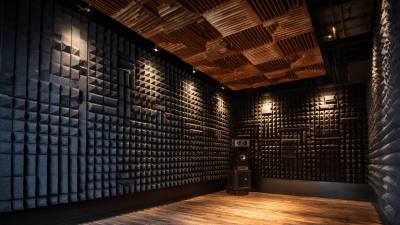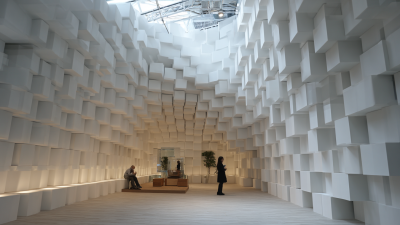In today's fast-paced world, the demand for quiet and serene environments has never been greater, especially in our homes and workplaces. One effective solution to achieve this is by incorporating stylish acoustic panels for ceiling into your space. These versatile panels not only enhance the aesthetic appeal of your interior but also play a crucial role in sound control, reducing noise and improving overall acoustics. Transforming your environment with these innovative design elements allows you to create a more comfortable and productive atmosphere, whether for work, relaxation, or entertainment.

In this guide, we will explore various ways to select and install acoustic panels for ceiling, ensuring that your space not only sounds great but looks great too. Join us as we delve into the exciting possibilities that acoustic panels offer and how they can redefine your living or working space.
Incorporating acoustic panels into ceiling design is a transformative way to enhance both aesthetics and sound quality in any space. Effective techniques for utilizing these panels begin with strategic placement. Install them in areas where sound reflections are most pronounced, such as around entertainment centers or above communal areas. This targeted approach not only improves sound clarity but also elevates the visual appeal of the ceiling, making it a focal point in the room.
In addition to placement, selecting the right colors and textures can further enhance the overall design. Acoustic panels are available in a variety of finishes, from smooth fabrics to textured surfaces. Opting for colors that complement the existing decor allows the panels to blend seamlessly into the environment while still serving their functional purpose. Consider mixing different styles and sizes to create a visually interesting pattern that enhances the dynamic quality of the space. These design-forward strategies ensure that acoustic panels not only reduce noise but also contribute to a stylish and sophisticated interior.
When considering the acoustics of a room, understanding sound absorption is essential for creating an optimal environment. Key metrics such as the Noise Reduction Coefficient (NRC) and the Sound Absorption Average (SAA) play a pivotal role in determining how effectively acoustic panels can mitigate sound issues. NRC measures the ability of a material to absorb sound energy across various frequencies, providing a numerical value between 0 (no absorption) and 1 (total absorption). Higher NRC ratings indicate better sound control, making them ideal for spaces that require focused listening or minimal distractions, like offices or home theaters.

Additionally, the thickness and density of acoustic panels also significantly impact their performance. Thicker panels often absorb lower frequencies better, while denser materials can be more effective in controlling mid to higher frequencies. Therefore, when selecting acoustic panels for ceiling installation, it's important to consider not only the aesthetics but also the technical specifications that align with your sound control goals. By choosing the right acoustic solutions, you can transform your space into a harmonious environment where sound clarity is prioritized, enhancing both productivity and enjoyment.
When selecting acoustic panels for ceiling sound control, understanding the materials available is key to achieving optimal performance. Various materials such as foam, fabric-wrapped, and wood veneer each offer distinct advantages. Foam panels are lightweight and often the most cost-effective option, making them ideal for home studios or casual settings. Fabric-wrapped panels can enhance the aesthetic appeal of a room while providing excellent sound absorption, perfect for offices or commercial spaces. Meanwhile, wood veneer panels combine functionality with a touch of elegance, adding warmth and style to the environment.
**Tips:** Consider your room's specific sound issues when choosing a material. For spaces with a lot of hard surfaces, foam panels might not suffice. Instead, opt for fabric-wrapped panels that can better absorb sound waves. Additionally, ensure you check the NRC (Noise Reduction Coefficient) ratings of the panels to gauge their effectiveness in sound control.
Always take into account not only the look but also the installation requirements. Some materials require professional installation, while others are designed for DIY setups. Carefully weigh your options based on your skills and the desired decor, allowing you to transform your space into a more acoustically pleasing environment efficiently.
| Panel Type | Material | Thickness | NRC Rating | Dimensions (inches) | Color Options |
|---|---|---|---|---|---|
| Wall Panels | Fabric Wrapped | 1 in | 0.85 | 24 x 48 | Red, Blue, Gray |
| Ceiling Clouds | Melamine Foam | 2 in | 0.95 | 36 x 36 | White, Black |
| Bass Traps | Mineral Wool | 4 in | 1.10 | 12 x 12 | Brown, Green |
| Decorative Panels | Wooden Acoustic | 1.5 in | 0.70 | 24 x 48 | Natural, Walnut |
 Acoustic panels have become essential in modern interior design, particularly for ceilings where sound control and aesthetics must coexist harmoniously. As per recent industry reports, the demand for stylish acoustic solutions has surged by over 30% in the last few years. This trend highlights a growing awareness among designers and homeowners that effective sound control does not have to compromise aesthetic appeal.
Acoustic panels have become essential in modern interior design, particularly for ceilings where sound control and aesthetics must coexist harmoniously. As per recent industry reports, the demand for stylish acoustic solutions has surged by over 30% in the last few years. This trend highlights a growing awareness among designers and homeowners that effective sound control does not have to compromise aesthetic appeal.
When selecting acoustic panels, the blend of style and functionality is crucial. Innovative designs and materials are now being used to create panels that not only absorb sound effectively but also enhance the visual appeal of a space. For instance, the inclusion of decorative textures and vibrant colors can transform a bland ceiling into a focal point, while maintaining optimal acoustic performance. Additionally, recent studies indicate that well-designed acoustic environments contribute to increased productivity and reduced stress levels, reinforcing the importance of integrating aesthetic considerations in sound control solutions.
Acoustic panels are an effective solution for enhancing sound quality in various spaces by reducing undesired noise. When considering installation, positioning is key. Research indicates that sound absorption increases significantly when panels are placed strategically across ceilings and walls at first reflection points. This means that you should identify where sounds first reflect and place your panels accordingly to maximize their effectiveness. For best results, aim to cover at least 20% of your ceiling surface with panels, as this can dramatically improve sound quality.
Here are some tips to ensure the maximum impact of your acoustic panels. Firstly, opt for panels with high Noise Reduction Coefficient (NRC) ratings; those rated between 0.85 to 1.0 are best at absorbing sound. Secondly, consider using panels made with phase change materials (PCM) that can not only help in sound dampening but also provide energy-saving benefits. Lastly, consider blending your acoustic panels with your décor for added aesthetic value, as the effective combination of form and function can enhance the overall environment of your space while keeping noise at bay.






